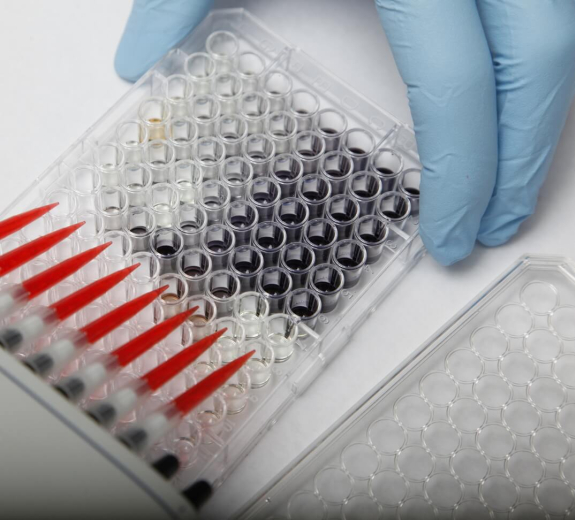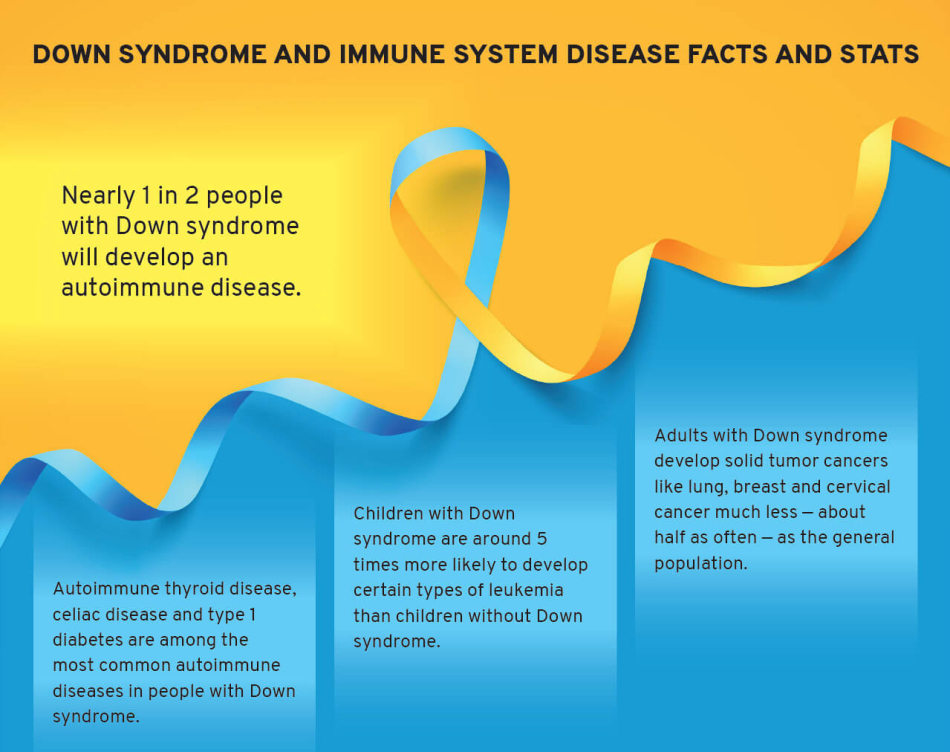“Most autoimmune disease research has been done on people who already have a disease, but we want to look earlier, and really understand the transition from being at-risk for a disease, to actually developing the disease,” Dr. Long says.
What Can T1D and Down Syndrome Teach Us About Prevention?
This research will start by looking at blood samples from two seemingly unrelated groups: people with Down syndrome and people with two or more biomarkers for type 1 diabetes (T1D). The common thread is that both of these groups are very likely to develop autoimmune disease. Decades of research at BRI and other institutes has shown that people with two or more specific biomarkers have a nearly 100% chance of developing T1D. Meanwhile, about one in two people with Down syndrome develop an autoimmune disease.
The research team will use state-of-the-art tools to examine naive T cells in a way that’s never been done before in autoimmune disease. They hope to identify early warning signs that naive T cells will turn into disease-causing T cells.
They’ll also examine whether anything about naive T cells’ genetics make them more likely to eventually cause disease.
“I’ve always felt like there was more to the story with naive T cells,” Dr. Long says. “This is finally an opportunity to see what they can teach us about autoimmunity.”
Tracking Environmental Factors Through A Single Drop of Blood
Led by Cate Speake, PhD, the researchers will also explore whether certain events or environmental factors can tip the scale from pre-disease into actual disease. They’ll track this, in part, using at-home finger-stick monitoring, a technique they helped develop to collect samples remotely during the pandemic.
“If study participants feel like they are having high or low blood sugar, or have a cold or if there’s something else that might trigger a change in the immune system like wildfire smoke or a stressful event, they can do this little finger prick, put the blood sample in the freezer, and bring it to their next visit at BRI,” Dr. Long says. “Just that one drop of blood gives us enough data to sequence and see if and how these events may tip the scale toward disease.”
The research team will also collect samples from a cohort of people who have one autoimmune disease, which increases the risk of developing a second one.
“Having one autoimmune disease makes a person more likely to develop another one, so we’re not just thinking about preventing a first diagnosis, but preventing subsequent diagnoses too,” Dr. Long says. “The earlier we can intervene the better. This study is a big step forward in making that possible.”





